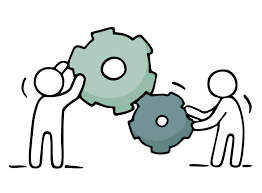Strategic Problem-Solving & Decision-Making for Social Entrepreneurs

Updated at: 2025-05-17 10:20:47 (6 months ago by Melkisedeck Leon Shine)
Mastering Strategic Problem-Solving and Decision-Making in Social Entrepreneurship
The field of social entrepreneurship necessitates innovative solutions and strategic acumen. Success hinges on the adept application of robust problem-solving methodologies and impactful decision-making frameworks. This article explores the critical interplay between these two elements, offering valuable insights and practical strategies for social entrepreneurs at all stages of their journey. Key concepts, such as root cause analysis, stakeholder engagement, strategic planning, and resource optimization, will be examined through the lens of established theories and models applicable to real-world scenarios.
Identifying Root Causes and Engaging Stakeholders for Sustainable Solutions
Effective social entrepreneurship commences with a thorough understanding of the underlying social issue, going beyond superficial symptoms to pinpoint the root causes using techniques like root cause analysis (RCA). This in-depth analysis, informed by frameworks such as the "5 Whys" or the "Fishbone Diagram," is crucial for developing sustainable solutions. Crucially, this process demands active community participation. Employing participatory action research (PAR) methodologies ensures the solutions are relevant and impactful. This approach aligns with principles of social justice and community-based participatory research (CBPR), emphasizing the importance of community voice and shared decision-making. By incorporating these concepts, social entrepreneurs can ensure their interventions address the core problem and resonate with the target community, thereby maximizing their impact and legitimacy.
Strategic Decision-Making: A Framework for Long-Term Sustainability
In social entrepreneurship, decision-making requires a long-term perspective rooted in sustainability. The application of strategic planning models, such as the Balanced Scorecard or the SWOT analysis, allows for a holistic assessment of potential impacts. Each decision must consider its environmental, social, and economic ramifications, aligning seamlessly with the organization's mission and values. Rigorous data analysis and cost-benefit assessments, incorporating elements of social return on investment (SROI) calculations, inform informed choices. This proactive approach mitigates risks, enhances accountability, and ensures alignment with the organization’s overarching strategic goals, promoting sustainability and long-term impact. The application of scenario planning helps prepare for potential challenges and uncertainties, thereby strengthening resilience.
Collaboration, Innovation, and Ethical Frameworks for Enhanced Impact
Collaboration is a powerful catalyst for success. Network theory emphasizes the importance of building strong relationships with stakeholders—including other organizations, funders, and community members—to leverage resources, share knowledge, and foster innovation. This collaborative approach leverages the collective intelligence and diverse expertise of the network, creating synergistic effects that surpass individual efforts. Ethical considerations are paramount. Utilitarian ethics, deontological ethics, and virtue ethics provide different frameworks for evaluating the ethical implications of decisions. Transparency, accountability, and adherence to ethical codes of conduct ensure the organization maintains public trust and fosters long-term sustainability.
Resource Optimization and Continuous Learning for Adaptive Capacity
Resource scarcity often necessitates efficient resource allocation. Techniques like Pareto analysis (80/20 rule) and prioritization matrices assist in optimizing resource deployment for maximum impact. Cultivating an inclusive organizational culture, promoting diversity of thought and experience, strengthens problem-solving capabilities and fosters innovation. This approach draws upon principles of organizational behavior and human resource management to build a high-performing team. Continuous learning is vital. Knowledge management strategies, including participation in professional development opportunities and engagement with relevant networks, enable social entrepreneurs to stay abreast of best practices, adapt to evolving challenges, and maintain a competitive edge within the dynamic social sector. This commitment to lifelong learning enhances adaptive capacity and promotes organizational resilience.
Building Resilience Through Adaptive Capacity and Growth Mindset
The social entrepreneurial journey inevitably presents challenges. Resilience, fostered by a growth mindset and a willingness to learn from setbacks, is crucial for long-term success. Applying concepts from positive psychology, such as reframing negative experiences as learning opportunities and cultivating optimism, helps maintain momentum even in the face of adversity. Celebrating both major and minor achievements reinforces positive feedback loops, driving continuous improvement and promoting a culture of achievement and recognition. This commitment to perseverance, combined with a deep-seated passion for positive change, is the hallmark of successful social entrepreneurs.
Conclusions and Recommendations
Effective social entrepreneurship requires a sophisticated understanding of problem-solving and decision-making methodologies. By integrating root cause analysis, participatory approaches, strategic planning frameworks, collaborative networks, ethical considerations, and resource optimization techniques, social entrepreneurs can significantly enhance their impact and build sustainable organizations. Future research could explore the comparative effectiveness of different decision-making models within diverse social contexts. Furthermore, longitudinal studies tracking the impact of specific interventions could further refine our understanding of successful social entrepreneurship practices. The widespread adoption of these strategies has the potential to amplify the positive social and environmental impact of the sector, contributing to a more equitable and sustainable world. This research should focus on measuring the long-term societal and environmental effects of these interventions, considering various indicators of success beyond immediate financial returns.
Reader Pool: What specific theoretical frameworks or models do you believe are most valuable in guiding strategic decision-making for social entrepreneurs, and why?




